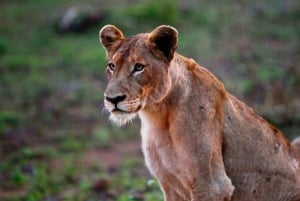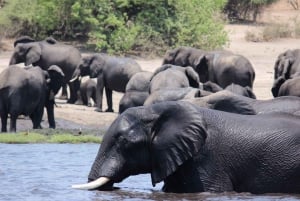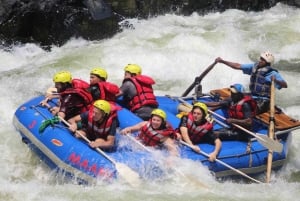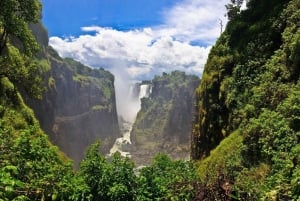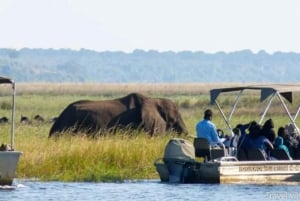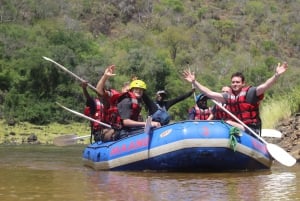Zambia Facts
Republic of Zambia
Formerly Northern Rhodesia, a British Protectorate.
Independence
24th October 1964.
The Flag
An eagle in flight over three verticle stripes of red black and orange on a green background. Red represents the struggle for freedom, black, the people of Zambia, orange the country’s mineral wealth and green the wildlife and environment. The eagle in flight symbolizes the freedom in Zambia and the ability to rise above national problems. The placement of the eagle and block of stripes is notable as most emblems and devices on flags are placed at center or at the hoist.
The flag was designed by Mrs Gabriel Ellison, OGDS, MBE, who also designed the national coat of arms and many of Zambia's stamps.
Coat of Arms
This coat of arms is adapted from the arms of Northern Rhodesia. The African Fish Eagle represents freedom and nation's hope for the future. The pick and hoe represent the country's economic backbone: agriculture and mining. The shield is a representation of Victoria Falls with white water cascading over black rock. The Victoria Falls represents the Zambezi river, from which Zambia takes its name. The coat of arms also has emblems of Zambia's natural resources: minerals and mining, agriculture and wildlife. The shield is supported by two figures which represent the common man and woman of the nation. The country's motto is "One Zambia, One Nation which emphasises the need for unity in a country of over 60 ethnic groups.
Currency
Zambian Kwacha (ZMW)
Geography
Zambia, a landlocked country in south-central Africa, bordered by Angola, Zaire, Tanzania, Malawi, Mozambique, Zimbabwe, Botswana, and Namibia. The country is mostly a plateau that rises to 8,000 ft (2,434 m) in the east.
Zambia is the 39th largest country in the world.
Land: 743,398 sq km
Water: 9,220 sq km
Lowest point: Zambezi river 329 m
Highest point: unnamed elevation in Mafinga Hills 2,301 m
Capital
Lusaka
Natural Resources
Copper, cobalt, zinc, lead, coal, emeralds, gold, silver, uranium, hydropower
Economy
Industry: Copper mining and processing, construction, foodstuffs, beverages
Agriculture: Corn, sorghum, rice, peanuts; cattle
Exports: Copper, cobalt, electricity, tobacco, flowers
Languages
Bemba 33.4%, Nyanja 14.7%, Tonga 11.4%, Chewa 4.5%, Lozi 5.5%, Nsenga 2.9%, Tumbuka 2.5%, Lunda (North Western) 1.9%, Kaonde 1.8%, Lala 1.8%, Lamba 1.8%, English (official) 1.7%, Luvale 1.5%, Mambwe 1.3%, Namwanga 1.2%, Lenje 1.1%, Bisa 1%, other 9.4%, unspecified 0.4%
Zambia is said to have over 70 languages, although many of these may be considered dialects.
Population (estimated)
14,638,505
Life Expectancy
41
Provinces
Central, Copperbelt, Eastern, Luapula, Lusaka, Muchinga, Northern, North-Western, Southern, Western
Political Parties
Alliance for Democracy and Development or ADD
Alliance for a Better Zambia or ABZ
Christian Democratic Party or CDP
Forum for Democracy and Development or FDD
Heritage Party or HP
Movement for Multiparty Democracy or MMD
National Restoration Party or NAREP
National Revolution Party or NRP
Party of Unity for Democracy and Development or PUDD
Patriotic Front or PF
Republican Progressive Party or RPP
United National Independence Party or UNIP
United Party for National Development or UPND
Calling code
+260
ISO 3166 code
ZM
Internet TLD
.zm








